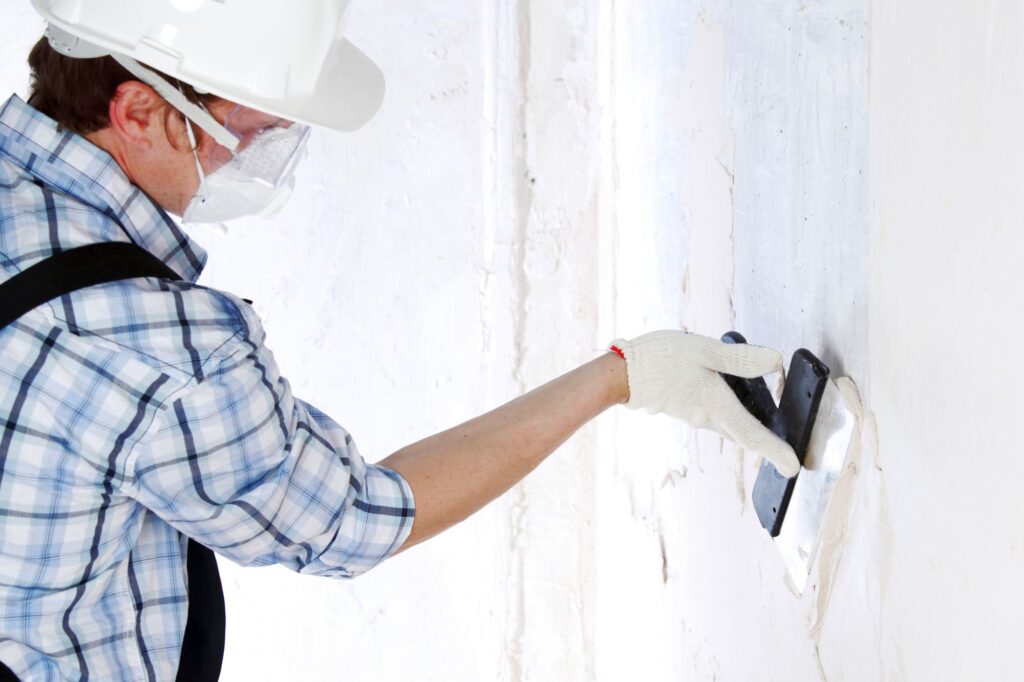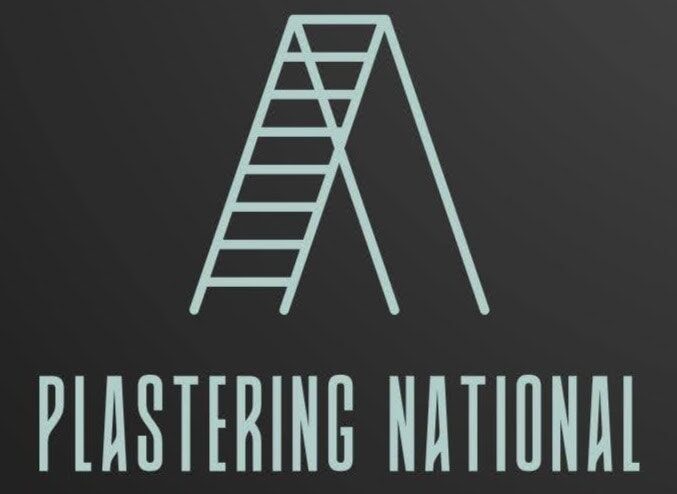Hanging items on plaster walls can be challenging, especially if you’ve only worked with drywall. Older homes with plaster walls need a different approach to avoid damage.
Let’s look at practical ways to hang items securely on plaster walls.
Let’s get straight to the point.
Hanging items on plaster walls requires specific tools and techniques to prevent damage. First, identify whether the wall is plaster or drywall, and then locate the studs using a magnetic stud finder or tapping.
For light items, use nails, screws, or adhesive hooks, while heavier objects require wall anchors or toggle bolts. Picture rails are ideal for avoiding direct plaster contact.
Always drill a pilot hole to prevent cracks and use appropriate hardware. Avoid overloading plaster walls and consider professional help for large items.
Understanding plaster’s properties ensures a secure installation and protects your walls.
Tools And Techniques For Hanging Items On Plaster Walls

Finding A Stud
Locating studs behind plaster can be tricky, but it’s essential for hanging heavy items. Here are a few methods to find a stud in plaster walls:
- Magnetic Stud Finder: This tool detects the nails used to secure the lath to the studs. Move it across the wall until it signals a stud.
- Knocking Technique: Tap the wall lightly with your knuckle. A hollow sound indicates no stud, while a solid thunk means you’ve found one.
- Electric Outlet Check: Studs are often located next to outlets. Remove the outlet cover to see if you can spot the stud’s edge.
Hanging Light Items On Plaster Walls
For lighter objects like small pictures or wall décor, a few simple tools should suffice:
- Nails or Screws: A regular nail or screw can hold items under 5 kg (11 pounds). Use a pilot hole to prevent the plaster from cracking.
- Adhesive Hooks: Double-sided adhesive hooks are a noninvasive option for items weighing less than 1 kg (2 pounds).
Hanging Heavier Items
When dealing with heavier items, it’s important to secure them properly to avoid accidents or damage:
- Wall Anchors: If you cannot find a stud, use plastic or metal wall anchors. Anchors distribute the weight of the object more evenly.
- Toggle Bolts: Toggle bolts provide excellent support for items heavier than 10 kg (22 pounds). Drill a hole, push the bolt through, and let it expand behind the plaster.
Picture Rails
Many older homes with plaster walls have picture rails. Picture rails allow you to hang items using hooks and wires, avoiding direct contact with the plaster.
Benefits Of Picture Rails:
- No drilling into plaster is required.
- Easy to move and adjust items without damaging the wall.
- Supports lightweight to medium-weight items.
Step-By-Step Guide To Hanging Objects On Plaster Walls
Step 1: Determine Wall Type
Before hanging anything, you must know what type of wall you’re dealing with. Use a pushpin test to determine if it’s plaster or drywall.
Gently press the pushpin into an inconspicuous area of the wall. If it goes in easily, the wall is likely drywall. However, if you feel resistance or the pushpin won’t go in, you’re dealing with plaster.
This step helps you choose the right tools and methods, as plaster walls need a different approach to prevent damage.
Step 2: Mark The Spot
Once you’ve confirmed that you have plaster walls, decide where to hang your object and mark that spot with a pencil.
Accurate marking is essential because plaster walls can be unforgiving if you make a mistake.
Ensure the placement is level and centred to avoid making multiple holes. A measuring tape and a spirit level can help ensure precise positioning before drilling or nailing.
Step 3: Drill A Pilot Hole
To reduce the risk of cracking the plaster, always drill a pilot hole before inserting any nails or screws. Use a drill bit slightly smaller than the fastener you’ll be using.
The pilot hole guides the fastener into place, preventing the plaster from chipping or crumbling. Drilling at a slow and steady pace also helps maintain the integrity of the wall surface.
Step 4: Insert The Anchor Or Screw
For heavier items, insert a wall anchor into the pilot hole. Gently tap the anchor into place with a hammer until it’s flush with the wall surface.
Once the anchor is secure, screw in your hook or fastener. If you’re hanging a lighter item and using a direct screw, carefully drive the screw into the pilot hole until it’s tight.
The pilot hole reduces resistance, making the installation smoother and more secure.
Understanding Plaster Walls
What Are Plaster Walls?
Plaster walls consist of a few layers:
- Wood Lath: Thin strips of wood nailed horizontally to wall studs.
- Plaster Layers: A mixture is applied over the lath to create a solid surface.
- Finish Coat: A smooth top layer to give a refined look.
Older houses, especially those built before the 1950s, often have plaster walls. Plaster is thicker and sturdier, unlike drywall, but it’s also more prone to cracking or chipping if handled improperly.
Plaster Vs. Drywall
Here’s a quick comparison to help understand the differences between plaster and drywall:
- Thickness: Plaster is typically ¾” to 1″ thick, while drywall is usually ½” thick.
- Durability: Plaster is more durable but harder to repair if damaged.
- Support: Plaster uses a wooden lath for support, while drywall hangs on its own.
Knowing these differences is crucial because the tools and methods used for hanging items vary between plaster and drywall.
Common Mistakes To Avoid
Using The Wrong Tools
Always use tools designed for plaster. Standard drywall tools might not work and can damage the plaster.
Ignoring The Studs
Only secure heavy items to studs when hanging them. Plaster alone cannot support heavy weights and might crack or break.
Overloading The Wall
Avoid hanging objects that are heavier than the wall can support. FConsider using professional picture hanging systems for items over 25 kg (55 pounds),
Additional Tips For Hanging Objects Safely
1. Use A Stud Finder For Heavier Items
Always locate a stud when hanging items heavier than 10 kg (22 pounds). It’s the safest and most reliable way to ensure the object stays securely in place.
2. Use Rail Systems For Versatility
Picture rail systems allow you to hang items without putting multiple holes in the plaster. They’re adjustable and ideal for art displays or frequent decor changes.
3. Test Different Locations
Try another spot if the first location doesn’t work or feels unstable. Finding the right place might take trial and error, but it’s better than risking damage.
4. Hire A Professional For Large Items
When it comes to heavy or expensive items, it’s often best to seek professional help. Experts have the right tools and techniques to ensure a secure installation.
Conclusion
Hanging items on plaster walls requires more care and the right tools. Understanding the unique characteristics of plaster will help you avoid damage while securely displaying your decor.
Whether hanging a lightweight picture or a heavy mirror, following these guidelines will make the process safer and more efficient.
Finding studs and using the right hardware for the job should always be a priority. Don’t hesitate to seek expert help if necessary.
Frequently Asked Questions About Plaster Wall
What’s the Best Way to Hang Pictures on the Wall?
Hanging heavy frames on the wall can be tricky and, with all the options available, downright confusing, even more so if you live in an old house with plaster walls. One foolproof method to hang heavy picture frames or mirrors is to use a molly bolt.
How Do You Put a Screw in Plaster?
Place a piece of tape over the mark that you made. This will help to keep the wall from crumbling when you need to drive in your screw. With your drill, drill a pilot hole in the wall at this mark. This helps guide the screw into the plaster. Because the plaster is thick and hard, driving in a nail without cracking the wall will be difficult.
How Much Weight Can a Screw Hold in Plaster?
Metal toggle bolts can support heavy loads (25 pounds to 50 pounds) in drywall, plaster and hollow-core concrete block. Plastic versions hold medium loads (10 pounds to 25 pounds) in drywall and plaster.
How Far Apart Are Studs in Plaster Walls?
You may wonder how far apart studs are in my home? They’re always spaced 16 or 24 inches on-centre (measured from centre to centre) along the wall and run between the floor and ceiling. Drywall or lath (for plaster walls) attaches to the edge of the studs.
Do Stud Finders Work on Plaster?
To function properly, the wall surface must have a consistent density level and be less dense than the wood stud. Stud finders, however, will not always return accurate results with lath and plaster walls because of their very inconsistent construction methods.


